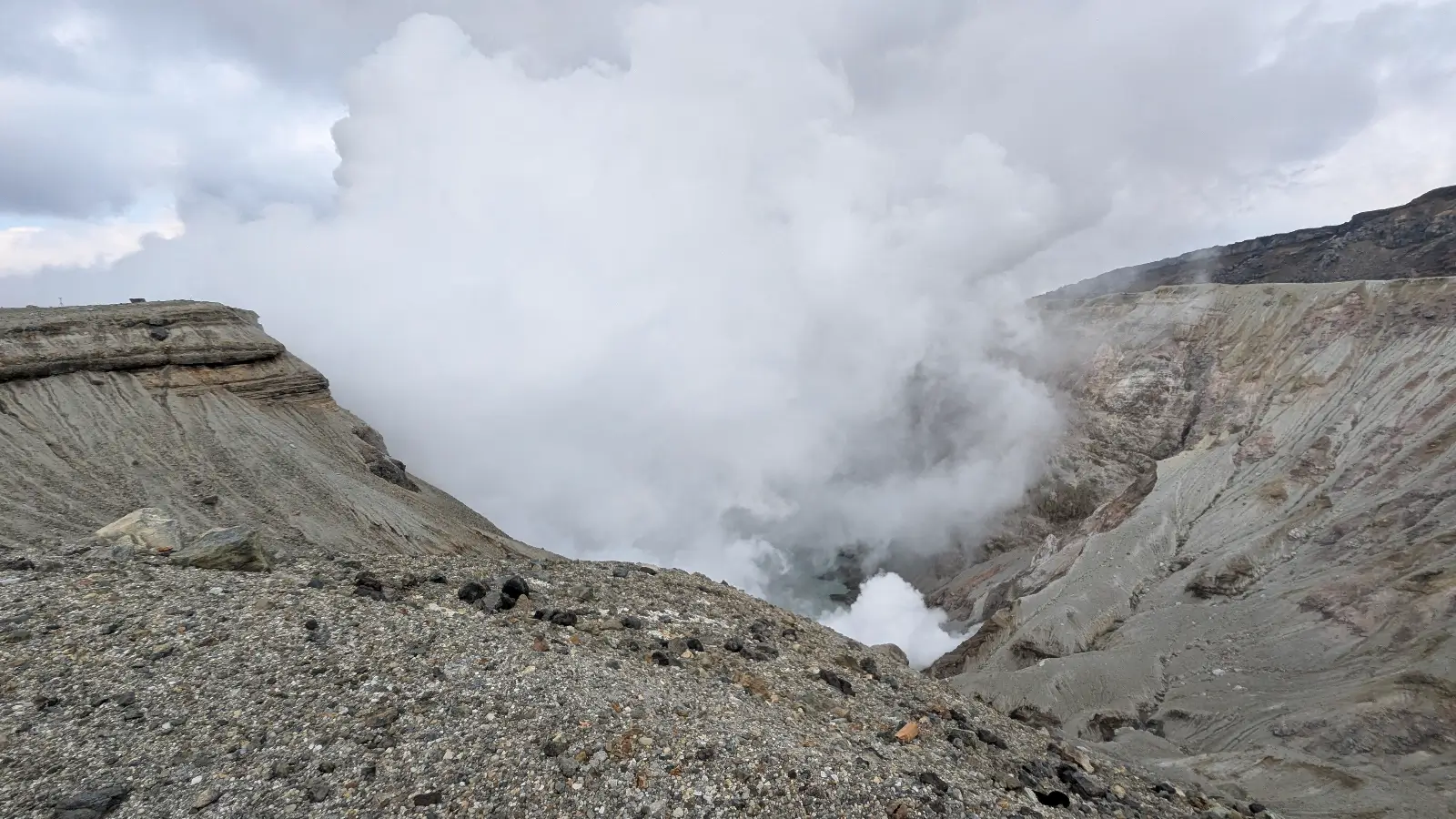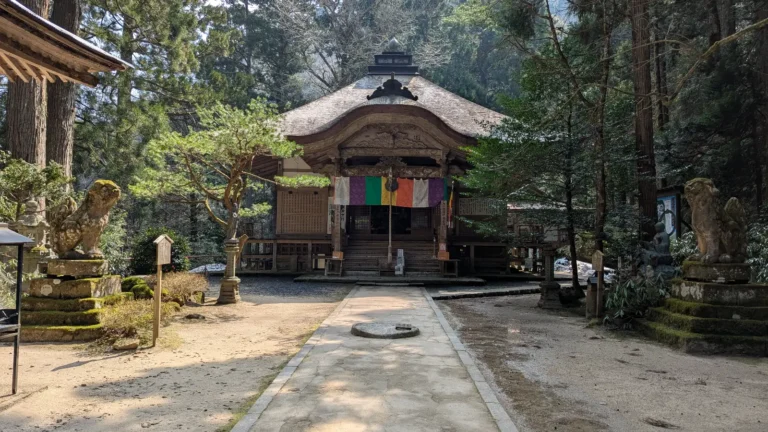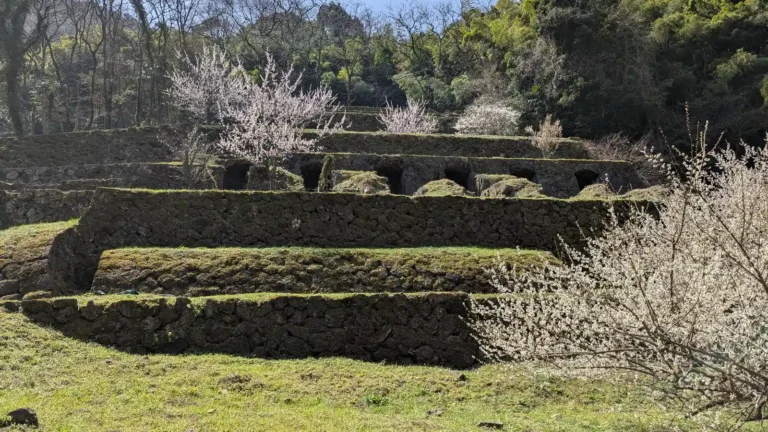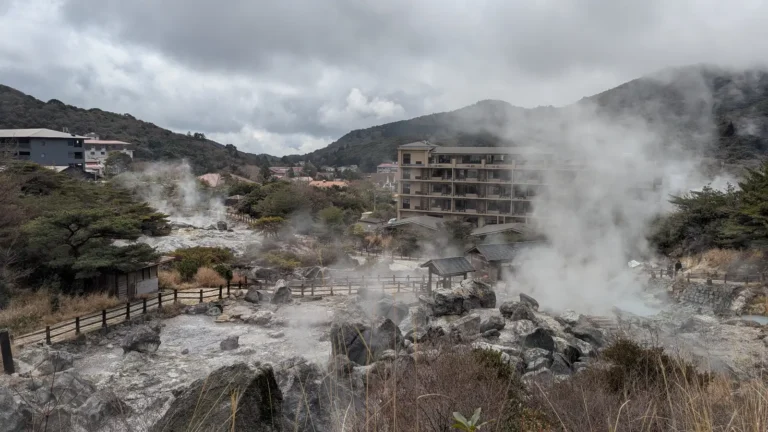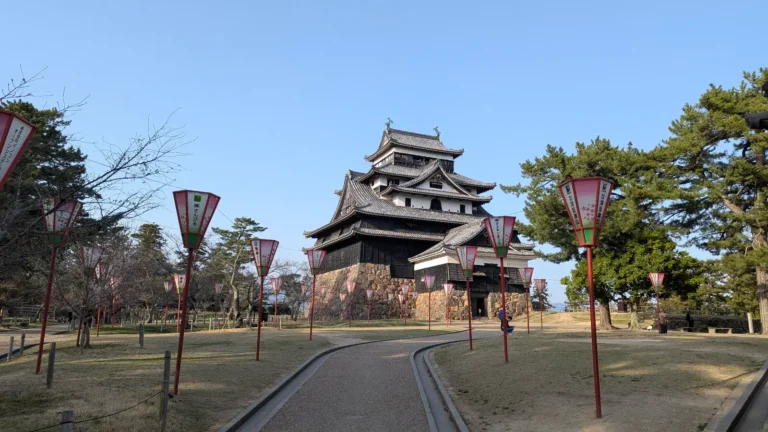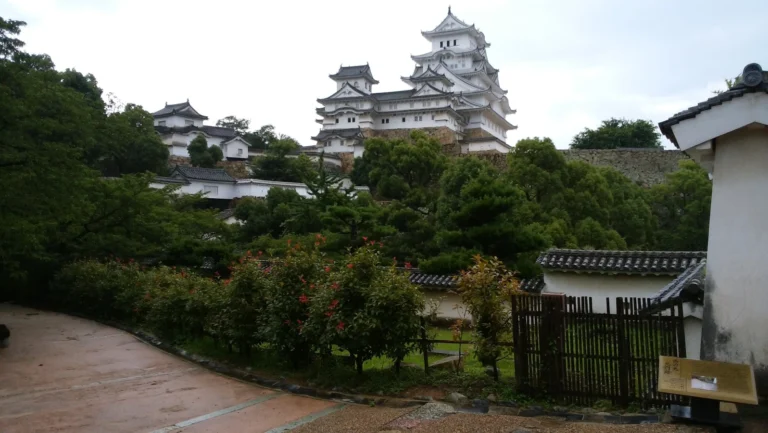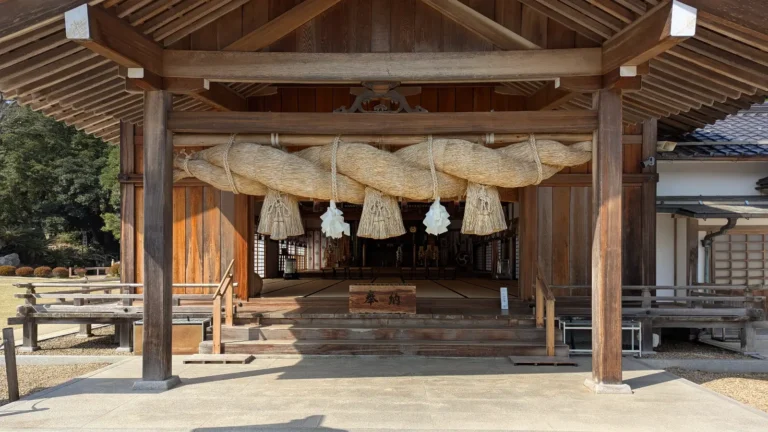Aso-Kuju National Park: A JOTM Guide
High on the Kyushu plateau, where steam rises from the soil and ridgelines ripple like breath beneath the sky, the land does not rest, it stirs. Aso-Kuju National Park (阿蘇くじゅう国立公園) is not a preserved relic, but a living terrain, born of fire and always becoming. Here, the vast caldera of Mount Aso breathes with quiet force, its crater pulsing beneath a veil of shifting mist. To the northeast, the Kuju Highlands stretch out wide and wind-brushed, offering trails that feel less like paths and more like invitations. There are no gates here, no great halls or formal rites, only heat, horizon, and the hush of wind moving through golden grass. Aso-Kuju does not rise. It opens. And in that openness, something ancient still listens.
Select links in this guide are affiliate links. They help sustain this space… allowing us to share more, with less dependence on advertising.
*Prices are subject to change.
Aso-Kuju at a Glance
- Region: Kyushu (Kumamoto & Oita Prefectures)
- Nearest City: Aso or Beppu
- Type of Site: National Park / Volcanic Landscape / Highland Plateau
- Best Season to Visit:
- Spring (April–May): Wildflowers bloom across the Kuju highlands; skies are clearest
- Summer (June–August): Lush green trails, dramatic clouds, and cool mornings
- Autumn (October–early November): Golden grasses and red maple blaze across crater rims
- Winter (December–February): Crisp air, snow-dusted ridges, and serene solitude
Why It’s Special in One Sentence
Aso-Kuju is a living landscape where fire breathes beneath your feet and silence stretches across sky-wide plains, inviting stillness in motion.
Why Aso-Kuju National Park Is Worth Discovering
- Aso-Kuju is one of Japan’s oldest national parks, established in 1934 to protect a landscape still in the act of becoming, shaped by fire, steam, and time.
- At its center lies Mount Aso, one of the world’s largest active volcanoes, its vast caldera cradling whole towns within the rim of a living mountain.
- To the northeast, the Kuju Highlands stretch into sky-blue distance, a plateau of rolling ridgelines, alpine flowers, and clear morning silence.
- Local myth speaks of kami in the volcanic breath and forests touched by unseen hands; shrines and onsen here are not placed, they are revealed.
- Hikers and pilgrims walk the same trails, drawn not only by views, but by the elemental presence of the land itself: its warmth, its breath, its rhythm.
- What makes Aso-Kuju extraordinary is not its raw beauty alone, but the way it reminds you that the earth, too, is alive, and listening.
Must-See Wonders at Aso-Kuju National Park
Mount Aso Crater
- One of the largest active calderas in the world, spanning over 100 km
- Offers views into the steaming crater, glowing with life on clear, safe days
- Access varies daily based on volcanic activity; check advisories before visiting
Kusasenri
- A wide, wind-brushed plain inside the caldera, once a lava lake
- Wild horses graze as sulfur steam curls on the horizon
- Feels like standing inside a living painting, caught between volcano and sky
Mount Kuju Hike
- One of the tallest peaks in Kyushu at 1,791 meters, but accessible for most hikers
- Offers alpine flowers in spring and sea-of-cloud views on early mornings
- A peaceful ascent into silence, wind, and wide horizons
Makinoto Pass
- A scenic mountain pass lined with trailheads and seasonal color
- Popular start for Kuju hikes, but also beautiful for a slow roadside stop
- Especially striking in autumn when the slopes turn copper and flame
Yunohira Trail to Nakadake
- A crater-rim trail that brings you close to Aso’s volcanic breath
- When open, it offers a rare glimpse into the earth’s living core
- On closed days, the silence along the outer trail still carries quiet awe
Local Secrets from JOTM
- Arrive Before the Light Wakes the Peaks: Early morning is when the mists lift, the winds still, and the trails feel like yours alone.
- Let the Earth Speak at Kusasenri: Most travelers snap a photo and go. Walk to the far side of the grasslands, where the wind speaks and the horses are more than silhouettes.
- Autumn Is the Soul of This Place: While spring is vibrant, October paints these ridges in a palette you’ll carry in memory. It’s the season of stillness.
- Skip the Ropeway, Hike the Rim: On days when the crater is closed, follow the outer rim trails. They hold their own quiet majesty, and a better perspective on scale.
- Stay a Night on the Plateau: Don’t rush through. Spend a night in the highlands where stars hang low and silence deepens with each hour.
Nearby Sacred Spaces & Silent Paths
- Kamishikimi Kumanoimasu Shrine – Hidden in the hills of Takamori, this shrine leads visitors through a corridor of stone gates and ancient cedar (1.5 hours by car)
- Kurokawa Onsen – Renowned for its riverside rotenburo and timeless atmosphere, best enjoyed at dusk or in light rain (45 minutes by car)
- Daikanbo Lookout – Offers sweeping perspectives of the Aso caldera, especially striking at sunrise or in autumn mist (25 minutes by car)
- Nabegataki Falls – A hidden waterfall you can walk behind, often framed in soft moss and quiet dripping sound (50 minutes by car)
- Unzen Onsen – Another Kyushu highland where steam rises and silence settles deep. (2.5 hours by car or rail via Kumamoto)
Aso-Kuju is only one expression of Kyushu’s volcanic soul. If your path winds further, consider the poetic stillness of Unzen-Amakusa National Park, the cultural depth of Kumamoto, or the forested hush of Saga. Each offers a different rhythm of quiet, shaped by heat, history, and time.
Getting to Aso-Kuju National Park
- By Train: From Kumamoto Station, take the Hohi Main Line to Aso Station (approx. 1.5 hours).
- By Bus: From Aso Station, buses run to the Aso-san Nishi Station and Kusasenri area (check volcano activity updates in advance).
- By Car: The most flexible option, allowing access to Makinoto Pass and Kuju trailheads. Routes are well-signed and scenic.
- Hours: Trail and crater access varies based on volcanic activity. Check the latest advisories from the Aso Volcano Museum or Japan Meteorological Agency.
- Cost: Free for park access. ¥500 for Aso Crater access (if open).
For travelers using the Japan Rail Pass, portions of this route may be covered, our guide offers practical insights on when it’s worth considering.
Resting Nearby: Where to Stay
- Kamenoi Hotel Aso – Contemporary comfort with wide windows overlooking Aso’s vast rim, just minutes from Kusasenri
- Sanga Ryokan – Hidden among trees and steam, this traditional inn offers intimate baths and seasonal kaiseki in deep quiet
- Hoshino Resorts KAI Aso – Each villa-style suite opens to a private garden bath, where star-filled nights and geothermal stillness meet
If you’re planning a broader journey through Japan, our foundational guides offer clarity for every step of the way. Explore Planning a Trip to Japan: A JOTM Guide, learn How to Get Around Japan, and find the Best Time to Visit Japan for a season that resonates with your rhythm.
FAQs and Travel Tips about Aso-Kuju National Park: A Few Last Things Before You Go
If you’re planning your own visit to Aso-Kuju National Park, here are some of the most common questions travelers ask, from crater access and hiking routes to when this volcanic landscape feels most alive.
A: The best time to visit Aso-Kuju National Park is from May to June for wildflowers and October to November for fall foliage.
– In late spring, pink azaleas (Miyamakirishima) bloom across the Kuju Highlands.
– Autumn brings golden grasses and maple leaves that light the crater rims in red and amber.
– Winter offers snowy trails and quiet landscapes, but some areas may close due to weather or volcanic conditions.
A: You should spend 2–3 days in Aso-Kuju National Park to fully explore its volcanic landscapes, hiking trails, and hot springs. This gives time to hike Mount Kuju, visit the Aso Crater, and relax in onsen towns like Kurokawa.
A: Aso-Kuju National Park is located in central Kyushu, Japan, spanning parts of Kumamoto and Oita Prefectures. It’s part of Japan’s third-largest island and known for its active volcano and highland trails.
A: Aso-Kuju National Park is famous for Mount Aso, one of the world’s largest active calderas, and the Kuju Mountains, which offer Kyushu’s highest peaks. It’s also known for volcanic grasslands, scenic hiking trails, and historic hot springs.
A: Top things to do in Aso-Kuju National Park include hiking volcanoes, visiting Aso’s crater, and relaxing in onsen towns.
– Hike Mount Kuju or Mount Nakadake
– Visit Kusasenrigahama grassland
– Watch sunrise from Daikanbo Lookout
– Soak in hot springs like Kurokawa or Yufuin
– Explore Tadewara Marsh or ride horses in the caldera
A: Yes, guided tours are available and often include stops at Mount Aso, Kuju Highlands, and local hot springs. Some tours provide geology or nature interpretation and may offer English-speaking guides if booked in advance.
A: The easiest way to get to Aso-Kuju National Park is by car, especially from Fukuoka, Kumamoto, or Beppu. You can also take the JR Hohi Line to Aso Station, followed by a local bus to the crater or trailheads.
A: Wildlife in Aso-Kuju National Park includes Akaushi cattle, wild horses, foxes, hares, and Japanese martens, especially visible in winter. The park is also home to rare alpine plants, butterflies, and marshland insects.
A: The best hiking trails in Aso-Kuju National Park include:
– Mount Kuju from Makinoto Pass
– Tadewara Marsh to Amagaike Pond
– Yunohira Trail to Nakadake Crater (if open)
– Outer rim hikes around Mount Aso
Check volcano advisories and trail conditions before hiking.
A: In winter, Aso-Kuju becomes a snow-covered volcanic landscape with quiet trails, ice-covered marshes, and occasional frost-covered trees. Temperatures can drop to -20°C, and snowfall can exceed 50 cm in highland areas like Bogatsuru.
A: Aso-Kuju National Park experiences distinct seasonal weather. Spring is mild, summer warm and humid, autumn cool with vibrant fall colors, and winters are cold with significant snowfall at higher elevations. Weather around Mount Aso’s crater can change rapidly due to volcanic activity.
A: No tickets or permits are required to enter Aso-Kuju National Park. However, access to the Aso Crater may be restricted due to volcanic gas or seismic activity. A small fee (about ¥500) is charged for crater access when it’s open.

